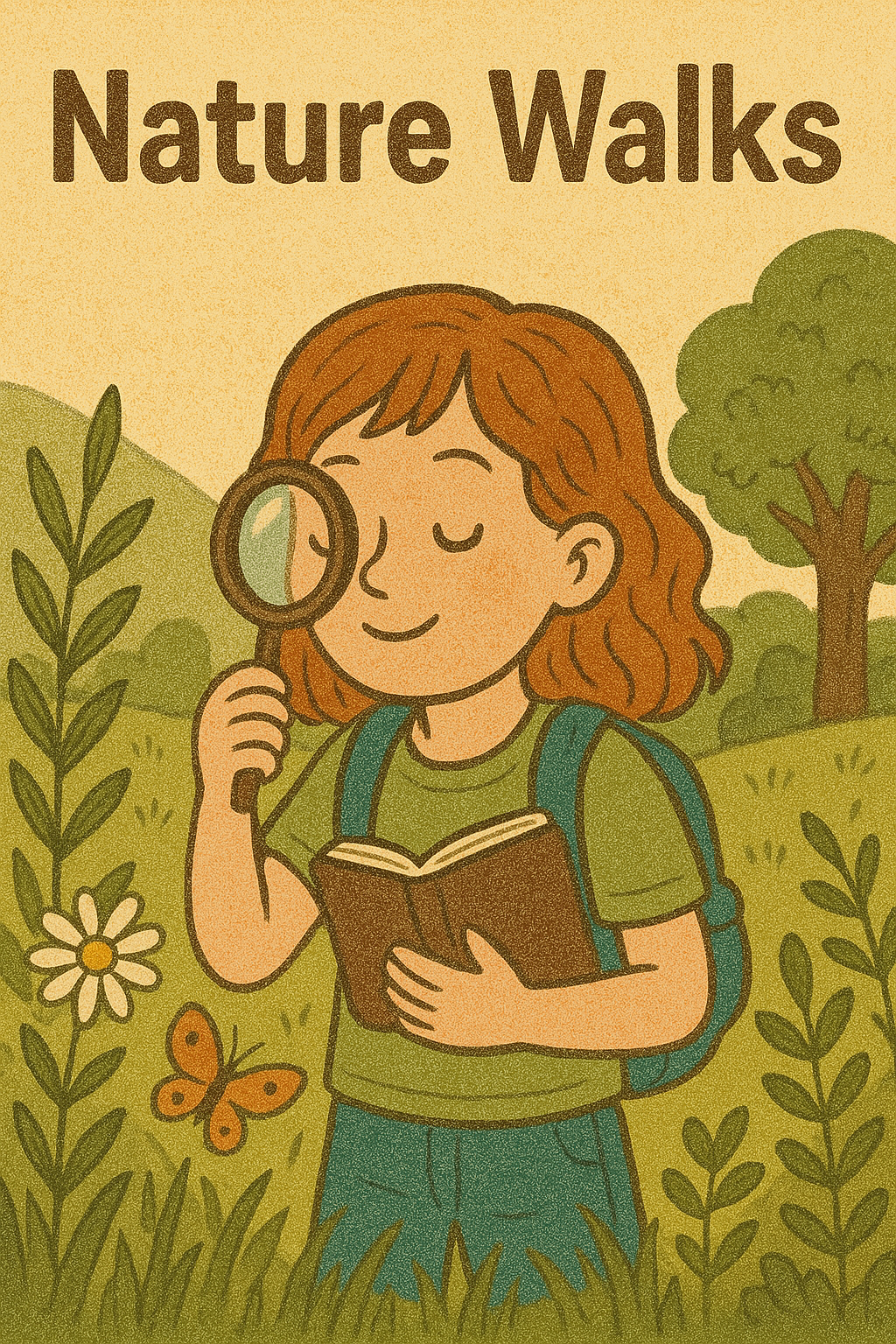Your basket is currently empty!

Cultivating Calm Through the Outdoors
Children are naturally curious about the outdoors. When you turn that curiosity into a mindfulness practice, you get a double benefit: kids learn to slow down and observe, and their connection to the natural world deepens. Mindful nature walks for kids offer wonderful ways to help children be fully present—listening, seeing, touching, sensing—and in doing so, reduce stress, boost creativity, and build love for nature.
The Value of Nature Walks + Mindfulness
In addition to fresh air and physical movement, mindful nature walks offer mental and emotional benefits:
- They lower anxiety and help children feel more grounded.
- They support concentration and focus, since noticing small sensory details engages the mind.
- They encourage curiosity and kindness toward the natural world, fostering respect and care.
Moreover, by combining nature with mindfulness, children learn that the world around them is alive, interconnected, and full of wonder. Over time, they carry this awareness into their daily lives.
How to Lead a Mindful Nature Walk with Kids
Here are easy, engaging ways to do nature walks mindfully:
- Use the senses fully
For example, ask: “What do you hear right now?” or “What smells do you notice?” Let children touch bark, feel leaves, observe colours of flowers. These prompts help children stay in the moment. - Notice shapes, colours, patterns
Encourage kids to look at the shapes of clouds, patterns in tree bark, transitions of light and shadow. Asking “What colours can you see around you?” helps their eyes and minds open. - Pause intentionally
Mid-walk, stop at a quiet spot. Ask children to stand still, close their eyes or soften their gaze, and simply notice sounds, smells, or the breeze. This pause heightens mindfulness. - Journaling & sketching outdoors
Bring along journal, pencils, maybe crayons. Children can draw leaves, sketch birds, press flowers, or write about how they feel. A Nature Journal works great for this. It allows them to record what they saw and how being in nature felt. - Gratitude moments
During or at the end of the walk, have children name things from the walk they are grateful for—a bird’s song, the warmth of the sun, the smell of damp earth. This mixes gratitude with observation and mindfulness.
Overcoming Common Challenges
Even with the best intentions, mindful nature walks can hit snags. Here are typical obstacles and what helps:
| Challenge | What Helps |
|---|---|
| Kids distracted by phones, games, or talking | Use short walks, keep prompts simple, make it playful—turn it into a “nature explorer game.” |
| Weather interruptions (rain, cold, heat) | Bring protective gear: raincoats, hats; have backup indoor nature-related prompts (look outside, listen from the window, draw nature). |
| Kids feeling bored or restless | Change pace: include periods of walking plus periods of stopping and observing. Use sensory scavenger hunts. |
| Journaling feels like a chore | Let children draw rather than write; use prompts sparingly; celebrate their observations, not perfect sketches. |
Integrating Nature Walks into Daily Life
To make mindful nature walks a regular habit, try:
- Weekly nature outings — even 10-15 minutes in a park or backyard make a difference.
- Walks in different places — vary scenery: woods, park, beach, garden. Variety enhances curiosity.
- Link with other mindful practices — follow a walk with mindful breathing for kids or have children reflect using the Feelings Journal.
- Family involvement — invite siblings, parents, pets; make it social so kids look forward to it.
Why It Matters
Ultimately, mindful nature walks help children reconnect—with themselves and their environment. They calm busy minds, nurture sensory awareness, and build appreciation for the natural world. Also, when children reflect on their walks through journaling, they preserve those moments of wonder and understanding. This builds mindfulness skills, emotional resilience, and a lasting love for nature.alk, children can use their senses fully—listening to birdsong, touching tree bark, smelling flowers, noticing the shapes of clouds. Parents can guide them by asking gentle prompts: “What’s one sound you hear right now?” or “What colours can you see around you?” This keeps children focused in the moment and reduces stress while boosting creativity.
Being in nature has its own benefits: it lowers anxiety, supports concentration, and encourages movement. Combined with mindfulness, it becomes even more powerful. Children learn to see the world as alive, interconnected, and worth caring for.
Journaling extends the experience. A “nature journal” lets kids draw leaves, record what they saw, or write about how they felt on the walk. They might press flowers or sketch birds. This reflection deepens awareness and creates a record of adventures in the natural world. Over time, they develop both mindfulness skills and an environmental appreciation.
Why it matters: Mindful nature walks ground children in calm, curiosity, and care for the earth. Journaling keeps those experiences alive and encourages lifelong wonder for the world.